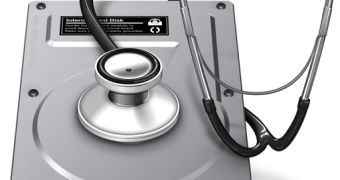If you do not already know it, backups are the most important steps you must take to ensure that your data will not be lost. Despite all the trouble you go through to make sure that your computer is always clean and running at its peak performance, there comes a time when even the best storage solution fails.
What will you do now? There is nothing you can do about it but try to save as much as you can using data recovery tools that, at best, will manage to recover only a fraction of what you had on your hard drive.
The conclusion is that you should perform backups of your system on a regular basis and make sure you keep multiple backups of irreplaceable and important files. If you are as paranoid as me, you should also keep at least one backup copy of all your important files in a different physical location (an "offsite" location as experts call it).
There are many ways you can back up your data but the most popular ones are using the integrated Time Machine and Disk Utility tools.
Using Time Machine
Mac users that have OS X 10.5 or later on their Macs can use the included Time Machine utility which will allow them to automatically back up their system and all important, irreplaceable files to an external hard disk or even to a network volume.
The Time Machine tool also features an intuitive interface for restoring your files or your entire system and is a pretty easy to use utility once you get the hang of it (some say it is the easiest backup solution ever concocted by a software developer since the beginning of time).
If you want to start using it, you can go read the detailed tutorial on how to use it published by Apple HERE and you'll get your backups up and running in no time.
Using Disk Utility
This alternative backup procedure will produce a disk image containing everything on your Mac OS X disk. Doing backups using this method will preserve your files’ unique attributes of, such as permissions, UUIDs and ACLs. Also, because this method produces a disk image backup, it is recommended if you want to go for the offsite storage backup procedure.
For an offsite backup you will have to make sure that your external disk is stored in a different physical location so that anything happens to your computer your data will be safe. If the external disk you use does not have enough free space for holding future backups, you may consider using a different disk for other backups or even deleting prior backups to free up disk space.
Backup to an external drive
1. Connect an external hard drive (FireWire or USB) with sufficient free space to hold a copy of your Macintosh HD. 2. Start using your 10.5 or 10.6 Install DVD. (Insert the DVD, then restart and hold the C key.) 3. Select your language and choose Disk Utility from the Utilities menu. 4. Select the disk you wish to back up in the source pane on the left. 5. Click "Verify Disk" to check the disk for any errors and click "Repair Disk" to repair if any issue is found. 7. Click the "New Image" button in the toolbar and give your image a name containing the date of the backup and the name of the disk you backed up for easier recognition. Note: You can also encrypt the backup if you want additional security. From the "Encryption:" pop-up menu, you can select either 128-bit or 256-bit AES encryption. When prompted, you will have to enter a password for the encryption. 8. Make sure the Save destination is on your external hard disk, then click "Save". 9. Enter your admin name and password when and if prompted. The imaging process will now begin. Approximately 1 GB / minute will be saved, depending on various factors. 10. When the imaging is complete, select the newly created disk image in the device pane, choose Images > Scan Image for Restore from the menu and let the scan complete. 11. Quit Disk Utility (press Command-Q) and the Mac OS X installer (press Command-Q again). You will be now prompted to restart.
Restoring a backup to your Mac OS X disk
Note: Use the Migration Assistant tool instead of Disk Utility if you want to properly transfer the data back to your Mac if the Mac you are restoring to is not the same Mac used to make the . Important: If you use these steps data with the same name in the same location will be overwritten.
1. Connect the external disk containing your backup. 2. Start using your 10.5 or 10.6 Install DVD. (Insert the DVD, then restart and hold the C key.) 3. Select your language and choose Disk Utility from the Utilities menu. 4. Select the internal Mac OS X disk you want to restore to. 5. Click the Restore tab and drag the internal disk to the "Destination:" field. 6. Click on the "Image..." button next to the "Source:" field. 7. Navigate to the location of the backup you want to restore (on your external disk). 8. Click "Open" to continue and then click the "Restore" button. Confirm you want to "Restore to Disk" by clicking on "Restore" again. 9. Enter your admin name and password. Also, if you have an encrypted backup disk image, enter the password if necessary. The restore process will now begin and the time it takes to restore depends on factors such as the amount of data contained on your backup disk image.
If you encounter any issues during your backups / restore sessions or you know of other better / easier methods of backing up a Mac OS X disk, share with us and the other readers in the comments section below.

 14 DAY TRIAL //
14 DAY TRIAL //